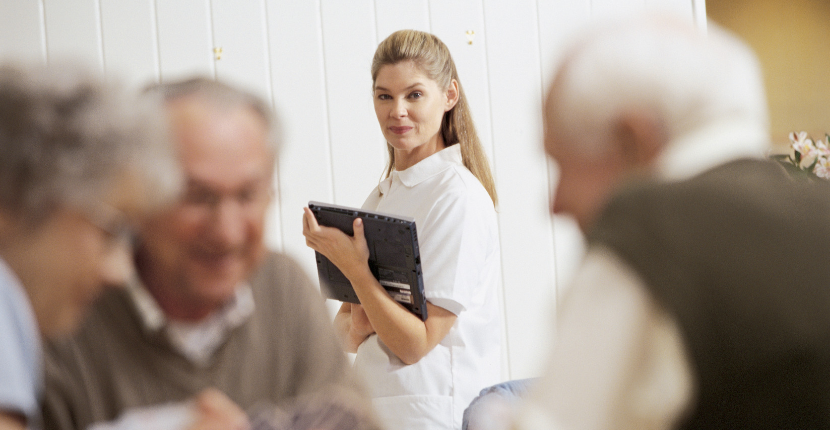Family caregivers to seniors with dementia often feel overwhelmed. Although memory loss and cognitive problems are most commonly associated with the condition, dementia can often include drastic and disruptive changes in behavior. Sometimes the behavioral symptoms are treated with antipsychotics, but they have severe side effects and often don’t work. These changes can sometimes become too much for the family caregiver and the senior often ends up in a nursing home and heavily medicated.
Researchers from the University of Michigan saw this problem and are in the process of finding a solution to help caregivers manage dementia. They are creating an easy-to-use, online resource for caregivers to track, understand, and find researched-based ways to treat the behavioral symptoms of dementia.
The program, aptly called “WeCare”, will give caregivers ways to help their family member with dementia without the usual suggestions of prescriptions. It will also give the caregiver the confidence to continue caring for the senior, hopefully reducing the need for nursing home care. It will be a helpful resource that would improve not only the life of the senior, but also that of the caregiver.
The researchers developing “WeCare” are working hard to complete the project and they are hoping to release it in the next few years.
Ways to Start a New Exercise Routine:
When beginning an exercise routine, the options can become overwhelming. Should you learn to golf? Take a regular dance class? Try yoga? Here are two forms of common exercise that are especially good for seniors.
Walking:
Taking a walk not only improves your mood but it improves your health as well. When walking, choose a pace that increases your breathing slightly. Swing your arms freely and focus on your steps. Notice that your torso is twisting slightly from side to side. This is really a workout for the whole body.
When your walk is completed, you should feel a little physically tired. Make sure to drink some water and stretch the muscles that you just worked to avoid cramps.
Rowing:
The rowing machine is an excellent way to get exercise when walking hurts your knees. The movement increases strength and endurance to arms and legs, as well as shoulders and back.
If you have never used a rowing machine before, ask someone to show you how to use it correctly to get the most out of your workout. Make sure to pull all the way back and squeeze your shoulder blades together at the end of your pull. This will strengthen muscles in the upper back and shoulders to avoid common aches.
Both of these exercises keep joints lubricated and moving smoothly. They encourage blood flow to muscles and strengthen tendons. They encourage balance and endurance. And they keep the heart, lungs, and brain strong.
To learn more, visit denverpost.com




